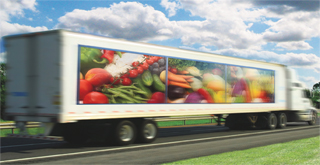“Retailers tend to be independent, at least in my experience,” commented Mathews. “They determine what they want and then drive that initiative.”
Sometimes the results—in packaging design or development—may not be in the best interests of shippers when it comes to freight costs. “In a few cases, retailers have driven packaging that prevents ‘cubing’ out a trailer,” says Mathews, which hampers efforts to maximize loads.
An example was a retailer requiring a particular package, Mathews explains, “that filled a semi-truck by space, but only shipped about two-thirds of what the truck could hold on weight.” Such shipments, he says, “are not cost-effective nor environmentally conscious.”
McCartney sees the independence of retailers coming more into balance as suppliers develop and create innovative packaging to not only reduce transportation costs but increase sales. “Two years ago in the grape industry, there weren’t many pouch bags used for table grapes. Because of this innovation, table grapes are increasing in sales, and not only do the pouches reduce cost because of the weight, they increase sales because of the grab-and-go convenience of having a handle on the top of the pack.”
Although advantageous at the retail level, continued growth in the prepackaged fresh produce category can pose more challenges for grower-shippers and suppliers than shipping bulk, especially since consumers can be a rather fickle bunch. Shoppers do not want labels to obscure their views of products, but they do like to see coupons, recipes, and other information—all in addition to freshness dating, nutritional facts, barcodes, and brand names.
The same is true for bulk vs. value-added produce—shoppers like to choose individual pieces of fruit or vegetables, but also love the convenience of these prepackaged or value-added items.
So will consumers continue to demand more creative and convenient packaging, even at higher cost? Will shippers be able to design sophisticated packaging to please both retailers and shoppers while still filling trucks to capacity? Can new packaging continue to meet expectations for freshness and shelf-life functionality while still being environmentally friendly?
“I think it’s going to be very interesting to see what people do in the near future,” says Inestroza. “It’s going to be a balancing act.”



